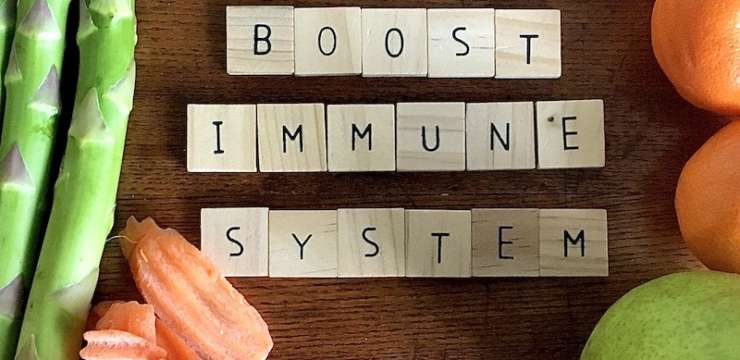The association between heart failure, cardiovascular disease, and fibrosis with a metabolic marker TMAO is key to preventing and reversing these chronic conditions. TMAO contributes…

Gut and Intestinal Health: The health of an individual’s gut determines what nutrients are absorbed along with what toxins, allergens and microbes are kept out. It is directly linked to the health of the whole body. Intestinal health could be defined as optimal digestion, absorption, and assimilation of food. But this is a job that depends on many other factors. More than 100 million Americans have digestive problems. Two of the top-selling drugs in America are for digestive problems, and they run in the billions. There are more than 200 over-the-counter (OTC) remedies for digestive disorders. And these can and do create additional digestive problems.
If an individual’s digestion is not working properly, the first thing is to understand what is sending the gut out-of-balance in the first place.
Low-fiber, high-sugar, processed, nutrient-poor, high-calorie diet, causes all the wrong bacteria and yeast to grow in the gut and damages the delicate ecosystem in your intestines.
Overuse of medications that damage the gut or block normal digestive function, i.e. acid blockers (Prilosec, Nexium, etc.), anti-inflammatory medication (aspirin, Advil, and Aleve), antibiotics, steroids and hormones.
Undetected gluten intolerance, celiac disease or low-grade food allergies to foods such as dairy, eggs, or corn.
Chronic low-grade infections or gut imbalances with overgrowth of bacteria in the small intestine, yeast overgrowth, parasites.
Toxins like mercury and mold toxins damage the gut.
Lack of adequate digestive enzyme function, from acid-blocking medications or zinc deficiency.
Stress can alter the gut’s nervous system, cause leaky gut, and change the normal bacteria.
Visits for intestinal disorders are among the most common trips to primary care doctors. Most, which also includes most doctors, do not recognize or know that digestive problems wreak havoc in the entire body. This leads to allergies, arthritis, autoimmune disease, rashes, acne, chronic fatigue, mood disorders, autism, dementia, cancer, and more.
Having proper gut and intestinal health is absolutely central to your health. It is connected to everything that happens in the body.
Functional medicine and health coaches are able to look at the source of the gut imbalance and run diagnostic tests to discover the exact type and number of bacteria imbalances. From here, natural supplements can be recommended such as a probiotic to recreate a healthy gut microbiome.

The association between heart failure, cardiovascular disease, and fibrosis with a metabolic marker TMAO is key to preventing and reversing these chronic conditions. TMAO contributes…

All disease starts in the gut, but how? Intestinal permeability is a great contributor to metabolic and chronic conditions, as it allows bacterial translocation. Furthermore,…

The high prevalence of chronic conditions such as hyperlipidemia, hypertension, type 2 diabetes, and obesity have a close link to our society’s poor lifestyle habits.…

Inflammation Fighting Smoothie
Dark leafy greens as well as certain fruits are a great way to help the body naturally fight off inflammation. We’ve put together a simple smoothie that can be consumed every morning to fuel your body and help reduce inflammation.
¾ cup orange juice
½ cup ice
½ spinach
1 cup strawberries, sliced
½ cup blueberries
2 tbsp flax seed
Additionally, it is great to add powder pre and probiotics to smoothies. This ensures we are feeding the microbiome the healthy bacteria it needs to flourish.
For additional protein, add in 1 scoop protein powder or 5oz of greek yogurt

The overweight and obesity epidemic has taken over the world, promoting the prevalence of chronic diseases. The common denominator of this problem is our sedentary…

Tight Junctions (TJ) comprise different proteins that bind to the actin cytoskeleton to provide barrier integrity to our gut lining. Indeed, TJs are key assistance…

Our main interaction with food, pathogens, and inflammatory signals is made through our intestinal barrier. Indeed, our gut epithelium is where the absorption, digestion, transportation…

Innate and adaptive immunity responses often take the spotlight regarding the defense and protection against pathogens. Nevertheless, barrier tissues have proven to store inflammatory memory…

The link between microbiota and different factors such as exercise, genetics, disease, body composition, and nutritional intake is undeniable. However, this means that the…

Insulin resistance is a problem that is strongly associated with obesity due to excess body fat and diabetes. However, growing evidence suggests that gut microbiota…

Metabolic and chronic disorders have created a tremendous economic burden in developed and developing countries. The overproduction of reactive oxygen species (ROS), proinflammatory cytokines, and…

Liver health and function are tied to an intricate web that comprises the gut microbiome, absorption, transport, end products of metabolism, and kidney. Indeed, the…

Mexican traditional medicine has left empirical knowledge about herbs, plants, and barks to use in critical or chronic conditions. Nevertheless, all of this information passed…

Increased intestinal permeability is the gateway to autoimmune diseases. It has become well-known that intestinal permeability is the third element leading to autoimmune pathogenesis along…

Gluten related diseases are a global phenomenon. The numbers are outstanding; 10% of the global population reports having wheat sensitivity, and 1% is diagnosed with…

Our gastrointestinal tract hosts more than 1000 species of bacteria that work symbiotically with us to promote a balanced immune system, metabolize nutrients, harvest energy,…

Allergies have been around for what it seems like forever. Most of our patients suffer from environmental or seasonal allergy. Most of the patients with…